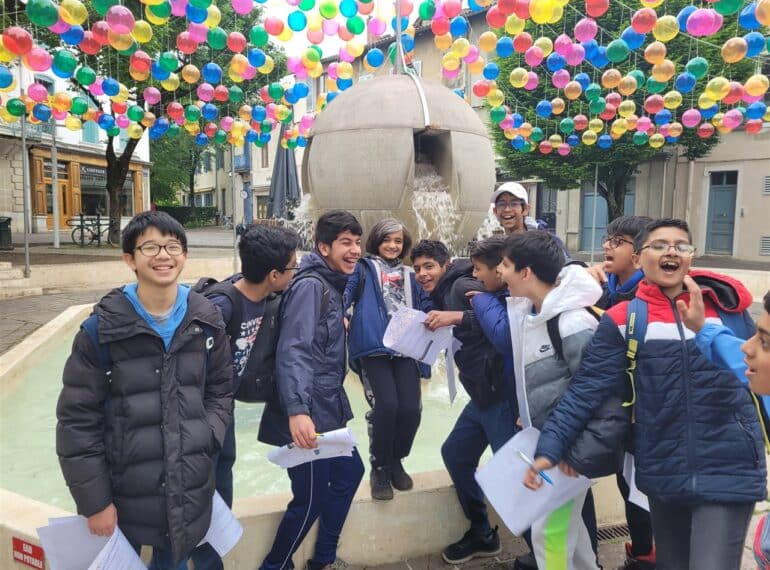
As the School as a whole marks QE’s 450th anniversary, the Languages department has its own landmark to celebrate – ten years of its French exchange.
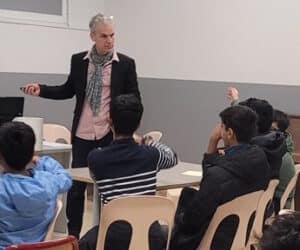 Twenty-one boys headed to Bourg-en-Bresse this month, a town which lies northeast of Lyon at the foot of the Jura Mountains. Their exchange partners came to Barnet last term.
Twenty-one boys headed to Bourg-en-Bresse this month, a town which lies northeast of Lyon at the foot of the Jura Mountains. Their exchange partners came to Barnet last term.
The QE boys enjoyed a week of activities that ranged from trips to local attractions to attending classes in the partner school, Collège St Pierre. This tenth exchange follows a three-year gap because of the pandemic.
Head of Languages Nora Schlatte said: “We were particularly excited for the 2023 French exchange, having not had an exchange run since 2019, and the trip was a great success.
“The QE boys and their French partners got on really well and it was great to see them sharing experiences and speaking more and more French as the week went on. Families on both sides said how happy they were to have been able to take part in this experience and we are thrilled to be maintaining our strong link with Collège St Pierre.”
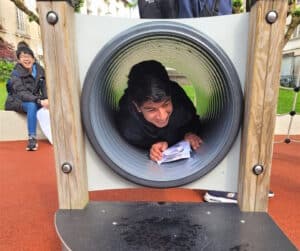 The first exchange with Bourg-en-Bresse was in the 2010 Summer Term, when 13 pupils from Years 8 and 9 visited Collège St-Pierre, the alma mater of a QE French teacher of the time, Océane Jullien, who now teaches in Thailand.
The first exchange with Bourg-en-Bresse was in the 2010 Summer Term, when 13 pupils from Years 8 and 9 visited Collège St-Pierre, the alma mater of a QE French teacher of the time, Océane Jullien, who now teaches in Thailand.
On this year’s trip the QE boys flew in to Geneva and then took a coach over the border to Bourg-en-Bresse, where they were met by the host families. They were accompanied by Ms Schlatte, Languages teacher Katrin Hood (who is also Head of Year 8) and Cover Supervisor Joan Anderson.
Their busy week included a:
 Visit to the local ‘parc des oiseaux’ (bird park) with their partners
Visit to the local ‘parc des oiseaux’ (bird park) with their partners- Day trip to Lyon, taking in a museum visit (Musée du Cinéma et de la Miniature), picnic lunch, shopping and a funicular railway ride to the cathedral, where they could enjoy the views from the hill
- Weekend spent with the families – activities reported include bowling, trips to the cinema, cave visits, and visits to the Chamonix mountain region
- Scavenger hunt through the town and a woodland adventure activity
- Day in school, taking part in a quiz, and, with their exchange partners, in an Art lesson, Mathematics lesson, PE activity and going to a basketball match in the evening
- Trip to the market.
Among the QE party was Dhruva Arjun, who said: “My highlight was watching the basketball match on the last night. The atmosphere was really fun and it was great to be there with our exchange partners.”
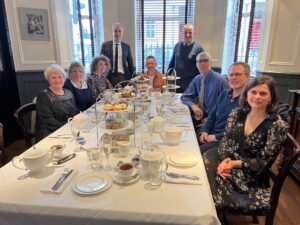 Fellow member of Harrisons’ House, Aaryav Sharma, said some of his most memorable moments took place above ground level: “We had a great afternoon doing accrobranche, which is a treetop adventure activity,” adding that he and two friends all “managed the really difficult black run, which was great!”
Fellow member of Harrisons’ House, Aaryav Sharma, said some of his most memorable moments took place above ground level: “We had a great afternoon doing accrobranche, which is a treetop adventure activity,” adding that he and two friends all “managed the really difficult black run, which was great!”
Tanish Nori, a member of Underne House, relished spending time with his partner and the family. “At the weekend, they took me to the Alps and we went to the Aiguille du Midi, which was amazing.”
Last term, Headmaster Neil Enright joined key staff involved in the exchange in celebrating a decade of successful trips with a special afternoon tea.

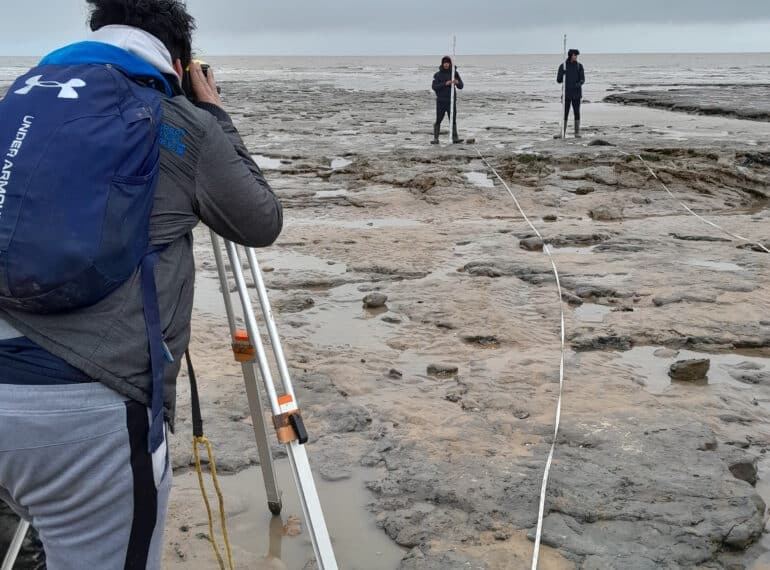
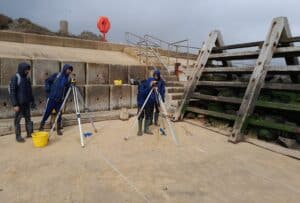 Braving a biting chill on the beach, the Sixth Form group investigated not only the threat posed by rapid coastal erosion at Walton-on-the-Naze, but also evaluated steps being taken by the town’s authorities to check it.
Braving a biting chill on the beach, the Sixth Form group investigated not only the threat posed by rapid coastal erosion at Walton-on-the-Naze, but also evaluated steps being taken by the town’s authorities to check it.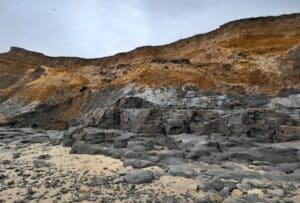 Walton has one of the fastest retreating cliff lines in the British Isles: on average, the cliffs are retreating between one and two metres every year. That the cliffs are falling away so rapidly is due largely to their geology.
Walton has one of the fastest retreating cliff lines in the British Isles: on average, the cliffs are retreating between one and two metres every year. That the cliffs are falling away so rapidly is due largely to their geology.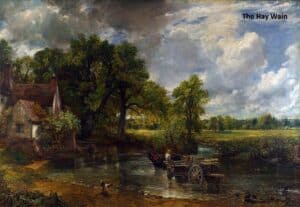 “However, the formations unfortunately represent a relatively weak barrier to coastal erosion.”
“However, the formations unfortunately represent a relatively weak barrier to coastal erosion.”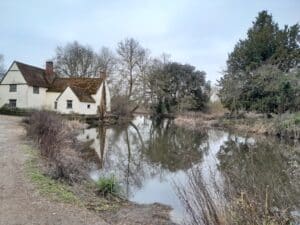 “Although no fossils were recovered, the fieldtrip was a great success, and despite the weather being bitterly cold, the boys demonstrated admirable fieldwork skills in sampling and collecting their data before analysis back in the classroom,” said Mr Butler.
“Although no fossils were recovered, the fieldtrip was a great success, and despite the weather being bitterly cold, the boys demonstrated admirable fieldwork skills in sampling and collecting their data before analysis back in the classroom,” said Mr Butler.
 The boys were special guests at one of AWS’s monthly re:Purpose days, on which AWS staff are encouraged to get involved in projects and initiatives outside of their normal day-to-day work.
The boys were special guests at one of AWS’s monthly re:Purpose days, on which AWS staff are encouraged to get involved in projects and initiatives outside of their normal day-to-day work. Enterprise Business Development Representative, Ella Cooper, who organised the day, together with her colleague, Juste Mena, said the day had seen the QE visitors “diving deep into careers in the cloud”.
Enterprise Business Development Representative, Ella Cooper, who organised the day, together with her colleague, Juste Mena, said the day had seen the QE visitors “diving deep into careers in the cloud”. They also heard from Senior Manager Joe Welton and Solutions Architect, Jack Bark.
They also heard from Senior Manager Joe Welton and Solutions Architect, Jack Bark.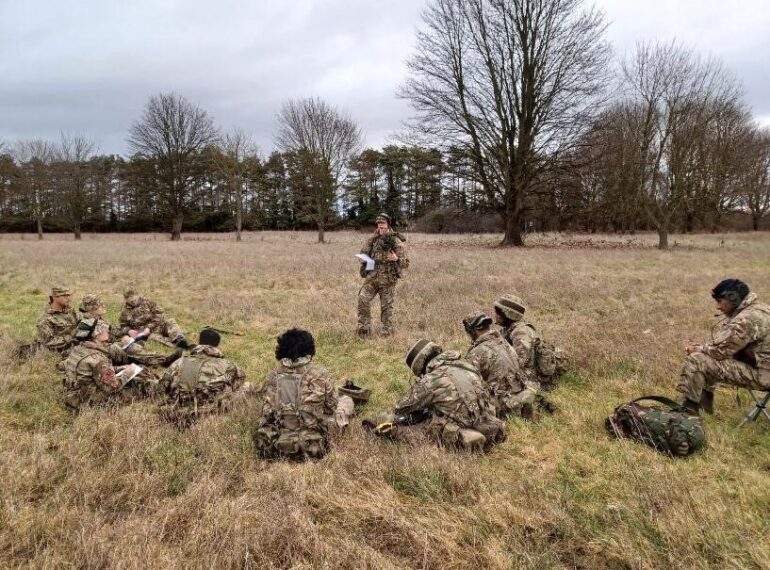
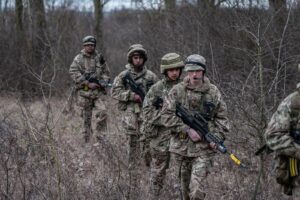 The School is planning a series of exercises so that QE’s Combined Cadet Force can try their hand against the local ACF.
The School is planning a series of exercises so that QE’s Combined Cadet Force can try their hand against the local ACF. The half-term camp involving ten Sixth Form CCF cadets took place at the Cadet Training Centre Bassingbourn Barracks, Royston, north Hertfordshire.
The half-term camp involving ten Sixth Form CCF cadets took place at the Cadet Training Centre Bassingbourn Barracks, Royston, north Hertfordshire.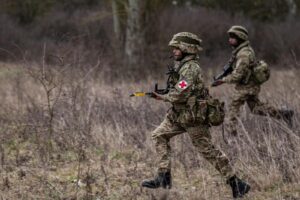 It is essentially a screen that plays out like a video game, yet allows users to try real weapons with the correct action, recoil, and so on. The trainer reacts to the user’s decisions and execution, thus demonstrating the impact of his actions.
It is essentially a screen that plays out like a video game, yet allows users to try real weapons with the correct action, recoil, and so on. The trainer reacts to the user’s decisions and execution, thus demonstrating the impact of his actions.
 “We were both exhilarated and a little depressed at how much rubbish the QE Together team pulled out of a tiny section of the Dollis Brook. Thanks also to Ben from CURB for the inspiration!”
“We were both exhilarated and a little depressed at how much rubbish the QE Together team pulled out of a tiny section of the Dollis Brook. Thanks also to Ben from CURB for the inspiration!”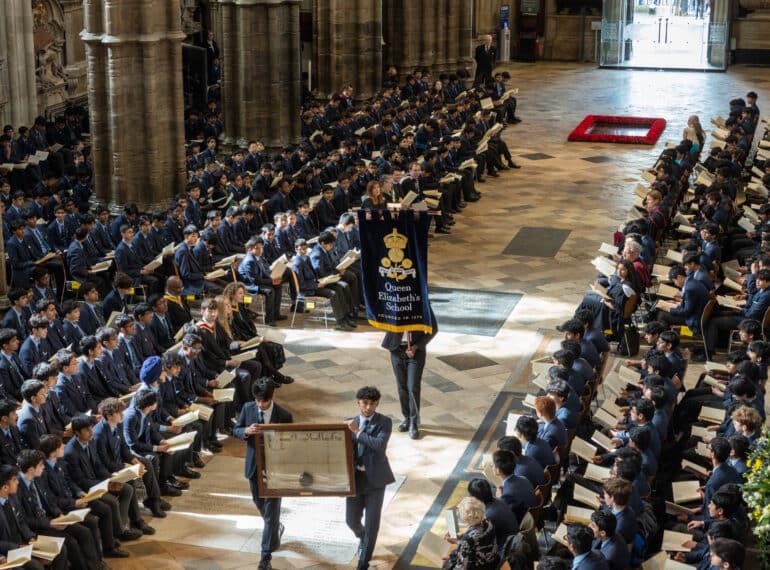
 Featuring elements ancient and modern, today’s service reflected the past, present and future of a school that has in recent years risen to a place of high national repute.
Featuring elements ancient and modern, today’s service reflected the past, present and future of a school that has in recent years risen to a place of high national repute.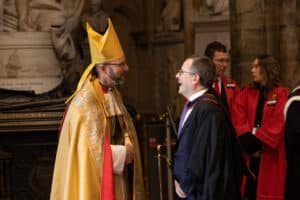 The service included religious and literary readings, with Year 11 pupil Rohan Kumar’s winning entry in the School’s 450th Anniversary Poetry Competition, and music from every century of the School’s existence, culminating in a premiere performance of an anthem commissioned from internationally renowned composer Howard Goodall.
The service included religious and literary readings, with Year 11 pupil Rohan Kumar’s winning entry in the School’s 450th Anniversary Poetry Competition, and music from every century of the School’s existence, culminating in a premiere performance of an anthem commissioned from internationally renowned composer Howard Goodall.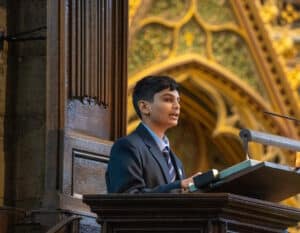 Drawing an analogy with Jesus’s parable of the foolish man who built a house on the sand and the wise man who built his house on the rock, Mr Enright said: “There have been many times over the past 450 years when the rain descended and the floods came and the wind blew and the School’s foundations were tested.”
Drawing an analogy with Jesus’s parable of the foolish man who built a house on the sand and the wise man who built his house on the rock, Mr Enright said: “There have been many times over the past 450 years when the rain descended and the floods came and the wind blew and the School’s foundations were tested.”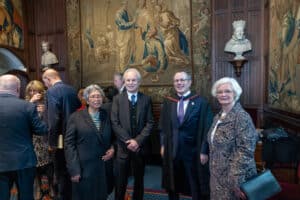 “Over the past 450 years, our remarkable school has often flourished, and always survived,” said Mr Enright.
“Over the past 450 years, our remarkable school has often flourished, and always survived,” said Mr Enright.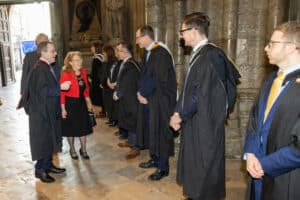 Before the service, the congregation listened to the orchestra’s performance of William Walton’s Crown Imperial and the Indian Ensemble’s performance of Tani Avartaram.
Before the service, the congregation listened to the orchestra’s performance of William Walton’s Crown Imperial and the Indian Ensemble’s performance of Tani Avartaram.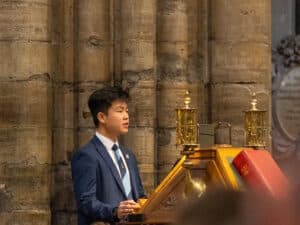 The Headmaster said the traditional Founder’s Day prayer, while others leading in prayer included Mrs Emi Aghdiran, Governor and Director of FQE, and Matthew Rose (OE 2002–09), Head of External Relations.
The Headmaster said the traditional Founder’s Day prayer, while others leading in prayer included Mrs Emi Aghdiran, Governor and Director of FQE, and Matthew Rose (OE 2002–09), Head of External Relations.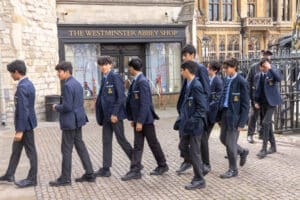 That like an oak, it draws its strength
That like an oak, it draws its strength